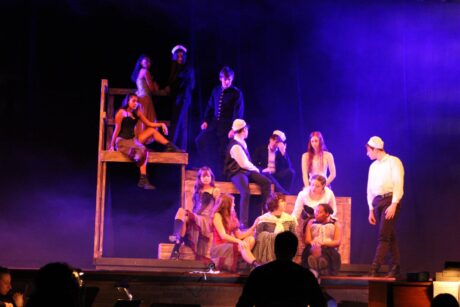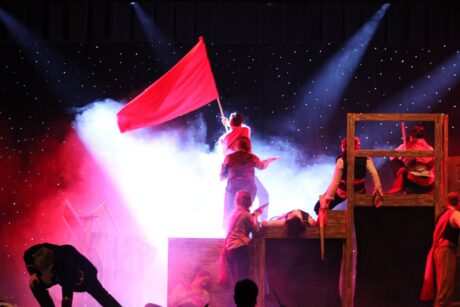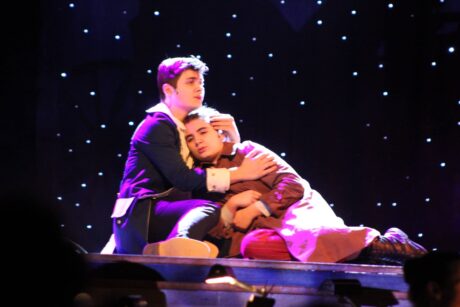 It is all together fitting that the image of the waif Cosette sweeping Thénardiers’ Inn serves as the basis (in slightly cropped fashion) for the emblematic image of Les Misérables. Here, within the grimy walls of this old chop house in Montfermeil, the conflicted forces that at the heart of the iconic musical are crystalized: from the pitiless justice of Javert who seeks to punish the hero Valjean, to the blackmailing mendacity of the Thénardiers, who conspire against him.
It is all together fitting that the image of the waif Cosette sweeping Thénardiers’ Inn serves as the basis (in slightly cropped fashion) for the emblematic image of Les Misérables. Here, within the grimy walls of this old chop house in Montfermeil, the conflicted forces that at the heart of the iconic musical are crystalized: from the pitiless justice of Javert who seeks to punish the hero Valjean, to the blackmailing mendacity of the Thénardiers, who conspire against him.
From his perspective as a lighting designer, Christopher Robin found Thénardiers’ Inn to be one of the most powerful scenes of the play. “I am moved by the look of The Inn,” he said. “It’s a dusty and grungy place that captures the poignancy of this story.”
 At a recent production of Les Misérables at the Greensburg Salem School outside Pittsburgh, Robin reflected the remorseless pathos of this spot in all its intensity with help from a collection of Chauvet Professional Maverick Storm 1 Wash fixtures supplied by Star Design Event Services.
At a recent production of Les Misérables at the Greensburg Salem School outside Pittsburgh, Robin reflected the remorseless pathos of this spot in all its intensity with help from a collection of Chauvet Professional Maverick Storm 1 Wash fixtures supplied by Star Design Event Services.
“I wanted to be able to throw lots of side light as if from moonlit windows and ambers for the candlelight lighting in the inn,” he said. “I loved using the Mavericks to play with amber and white together. They seemed to be meant for this scene.”
Robin used the six Maverick Storm 1 Wash fixtures in his rig s as side booms, positioning one unit at the end of each electric right at the legs. “With the atmospherics, the side light reads very well,” he said. “The six Mavericks themselves could wash the stage in side light.
 “The majority of my looks were from the Mavericks and conventionals,” continued Robin. “I tried to use as much side light as I could on this show. Being able to create wide beam angles and colors with the Mavericks was very helpful to me. Also being able to shift the light ever so slightly helped to create dramatic transitions at key moments of the story. A lot of people die in Les Misérables, so you really have to convey the emotion of carrying the character home with light.”
“The majority of my looks were from the Mavericks and conventionals,” continued Robin. “I tried to use as much side light as I could on this show. Being able to create wide beam angles and colors with the Mavericks was very helpful to me. Also being able to shift the light ever so slightly helped to create dramatic transitions at key moments of the story. A lot of people die in Les Misérables, so you really have to convey the emotion of carrying the character home with light.”
Working with technical director James Baker and atmospheric technician Bradyn Claycomb, Robin used color and texture to reflect the passage of time in the play, which takes place over a 20-year period. He also relied on a fiber curtain background to add a dreamy celestial touch to his design, effecting a stary night image during the battle scenes, and returning to it as a reoccurring theme for Javert, particularly when he sang “Stars,” a song about his determination to pursuing Valjean.
Of course, Javert never brings Valjean to justice. In the end Valjean is vindicated and before he dies is reunited with his adopted daughter Cosette, the waif who has grown into a beautiful married woman but will always be remembered for the image of her from the scene at Thénardiers’ Inn.
Further information from Chauvet Professional: www.chauvetprofessional.com


